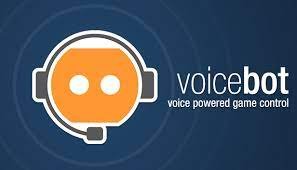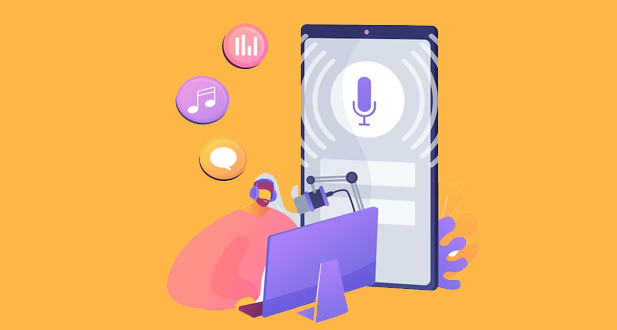What is a AI voice bot ?
A voicebot allows a user to communicate with a product or service by speaking to it. A voicebot that uses artificially intelligent & Natural Language Processing (NLP) can comprehend spoken questions and requests and create an appropriate audio answer. It is beneficial to think of a voicebot as a chatbot, even though they are not the same. Both utilise the same core technology and are made to recognise a customer’s query, find the proper response, and give it.
Voice Bots are distinct because they move more quickly. The fastest method of human communication is voice, it is quicker than typing or using a mouse to select options from drop-down menus. Voicebots therefore have enormous possibilities for improving the customer service that a business provides. But creating a voicebot that accurately captures your company’s tone of voice and can comprehend both the context and the content of a customer’s request poses a difficult task that can only be conquered with professional assistance.
As soon as the user talks, ASR transcribes what they say into text, which NLP then interprets (natural language processing). The relevant response is then created and rendered as speech using TTS. Voicebots are finding more uses as time goes on; they are not merely for use with virtual voice assistants like Alexa, Siri, and Google Assistant.
How does voice bot works?
Voice recognition helps the voicebot interpret the speaker’s request in normal language, with a success of up to 98 percent. Thanks to the VAD, the system can hear the caller’s voice while he speaks (Voice Activity Detection). The automated speech recognition (ASR) technology subsequently converts the sound into text. These two components combine to form the STT (speech to text) engine, which enables the transcription of spoken words into written text.
The artificial intelligence engine known as NLU (natural language understanding) then analyses this text (transcript) in order to determine the purpose of the caller’s request based on the words he speaks. Of course, just as a human does. The voicebot then selects the solution to provide the caller and verbally produces it using a TTS (text-to-speech) technology. The fact that all of these procedures take as little as a second to complete is what’s most astounding.
-
Take away any background sounds
When speaking into the a microphone, background noises like chitchat, automobile horns, and other distractions are inescapable. The important information of a communication can be distorted by these sounds. AI can, however, distinguish between the real message as well as the background noise using a neural net that works similarly to a human brain.
-
Jot down input
ASR technology enables the bot to filter out unimportant sounds so it can concentrate on comprehending the customer’s spoken language, intent, & accent. Pre-speech recognition is how the technology operates. In contrast to complicated human speech, it divides the users’ vocal input into groupings of data that are simpler to process.
-
Analyze the data to arrive at a logical conclusion
AI-powered voice bots classify the sped-up data so that each component may be understood once more. Based on user intent, sentiment, and use cases particular to the industry, they employ educated natural language processing (NLP) & natural language understanding (NLU) algorithms to determine the true meaning behind the communication.
-
Utilize syntactic and semantic methods to process data
The bot can discern hidden context underlying human statements and words with the aid of a semantic analysis engine. The syntactic technique simultaneously examines and supports the messages with grammatical rules.
-
Publish the response
The best response is transformed into audio by an AI voice bot utilising a text-to-speech system. You may teach this system to speak for itself so that it is more applicable to use cases that are specific to particular industries.
-
Limit the final response
The speech bot arrives at a predetermined range of possible answers after analysing the customer’s voice input. The speech bot then assesses and narrows down the available answers, selecting the one that answers the customer’s question the most precisely and objectively.
Why is a voice bot used?
A voicebot must respond to customer issues right away. Because speaking is the quickest way to connect with people, it is preferred over typing in questions and using a mouse to navigate drop-down menus. As a result, voicebots offer tremendous opportunity to improve the level of customer support a company provides. We are a bunch of multi-taskers that enjoy taking calls while driving and listening to podcasts while biking. Voicebots are therefore a trustworthy and practical choice because your clients will undoubtedly be juggling multiple jobs at once.
A voicebot is available at all hours of the day for communication. Customers can reach the contact centre at any time and from any location using voicebots. As a result, you are not required to phone during office hours or wait in line to talk with an agent. The speed of these chats powered by bots can greatly improve customer service.
Voicebots constantly improve their responses based on the actions & history of the consumer thanks to a power of artificial intelligence. Even when they don’t give a consumer the perfect answer, they learn from these conversations and contextualise their mistakes to provide better answers in the future.
But developing a voicebot that accurately replicates your company’s tone of voice and can understand the context & content of a customer’s request is a difficult task that can only be overcome with the aid of professionals.
Features of Voice bot
-
Being able to wait and listen
The debate about intent understanding highlights the fact that there are high expectations for voicebots and other AI helpers. While the customer wants the bot to be a “good listener” so it can determine the next steps or stop speaking while the customer is speaking on the other end, you also want the bot to be able to explain the reason for its call.
-
Personalization
When a customer calls a company, they want prompt responses. This requires having the capacity to quickly transfer their problem to a more capable individual. Therefore, increasing the amount of procedures a caller must take is irritating. For instance, a customer who has gone to the trouble of contacting a firm becomes irritated when he is required to use an IVR to identify himself, choose the appropriate options to categorise the reason again for call, and then describe the issue. In this case, incorporating the concept of personalisation is essential for improving customer experience with voicebots.
-
Ability to continuously learn using AI
Understanding speech sounds is a difficult process that seems to go on forever. We humans frequently misunderstand and misinterpret each other’s remarks. Voicebots have made great strides in this area. For instance, an AI-powered voicebot is aware of this reality and is always learning. Based on previous outcomes, it continuously improves its accuracy and predictability.
-
Agent availability
A voicebot’s goal is to assist agents in satisfying client requests. Bots do not exist as a substitute for agents. A customer can choose to speak with an agent during a call. This need not always occur, but it must be based on previously established, user-oriented fallback criteria.
-
Intent evaluation
Possibly the most significant aspect is this one. During a conversation, subtext and comprehension are essential. Unfortunately, when we speak as humans, we often ramble on. A voicebot must be able to employ its “Intent Analysis,” or the ability to determine the meaning behind our remarks, in light of this fundamental human conundrum.
-
Being able to react quickly
For a good, useful experience, speed is crucial, just like with the majority of other technologies. A good voicebot should be able to comprehend and respond to the customer’s speech at the same rate. Delays and slow responses irritate customers and give them a negative opinion of the company.
-
No Lag
The same is true for hardware and software in today’s technology: for a smooth, effective experience, speed is crucial. In order to be effective, a speech bot must be able to understand, respond, and act at the same speed as the customer. Lags and delayed replies irritate customers, which can lead to a negative first impression and possibly the loss of a lead.
-
Adapting and Learning
In terms of connecting with people, bots have advanced significantly. Based on interactions, an AI-powered bot may continuously increase its accuracy and predictability. Currently, well-programmed bots were capable of comprehending lengthy sentences, recognise some multilingual terms, and understand slang & colloquial speech.
-
Application of Voice bot
Due to its ability to reduce the time needed for customer support, voice bots can be quite beneficial for organisations. Several ways that AI voicebots are being used to enhance the consumer experience are given below.
-
Customer Support Automation
Many thousands of incoming and outgoing calls can be automated with voicebots. A single bot may interact with several clients, responding to each one individually. lowering the cost of customer support.
-
Boost Online Sales
Through tailored dialogues, voice bots may interact with and assist your consumers. They can market a new product, plan meetings, qualify prospects, generate leads, and improve engagement & digital revenues by 200%.
Advantages of Voice bot
-
Connect with clients using cutting-edge voicebot technology
With advances in NLP science, intelligent voice control bots now have the capacity to mimic the subtleties of speech. It is necessary to hear this evolution of natural language in order to understand it. AI is a major influence in communication nowadays. Voice answering machines no longer drive callers to the brink like they once did. There is no reason to be concerned about the lengthy language options where we were asked to select from a list of terms before broadcasting them obnoxiously.
-
Moving on
Voicebots are aware of when they must refer a client to a human. Even though they are incredibly intelligent and sophisticated, voicebots won’t always be able to provide the correct solutions. Though voicebots excel at providing simple, FAQ-based answers, including explaining opening hours and refund policy, when a customer’s question grows more complicated, they are able to transfer the call to a human to handle it.
-
Business operations that can be scaled up
People are equipped to handle 2 to 3 chats at once. Voicebots, on the contrary hand, have no such restrictions. In response to the volume of calls, businesses may quickly scale up or scale down their customer service.
-
Customized connections
Voice-based interactions open up new avenues for creating more superiorly tailored connections. Voicebots, for instance, may instantaneously verify a consumer using voice recognition, and they can adapt their responses based on the user’s past interactions with a company. In light of the conversational nature of the technology, interactive voicebots make customer support more user-friendly.
-
Ease of integration
Voicebots can seamlessly and simply interface with the telephone infrastructure and customer support technology stack. Because of this, self-service, autonomous options are highly complex and give voicebots more power.
-
Reduced contact with customers rates and lower operating expenses
This may be the main advantage of voicebots for businesses. By computerising simple client interactions that do not require live human intervention, they increase resources and lower contact rates. Additionally, contact centre representatives are spared from processing time-consuming tier-1 support inquiries and can instead concentrate on complex customer issues.
-
VoiceBots and voice assistants are becoming more widely accepted
Alexa and Siri are setting the standard for voice assistants, which are becoming more and more common in our day-to-day lives. Three years ago, voice control of ones technological devices was still a distant dream. Today, many people use voice-based interfaces on a regular basis. In comparison to other human-machine interfaces, voice interaction is the most intuitive.
Conclusion
Virtually every operation that focuses on the needs of the consumer uses speech bots. They are frequently employed to support agents by helping clients meet a few of their needs through dialogue. Bots must engage in “smart” (intuitive), easy, and seamless “conversations” with users in order to succeed. Their programming & integration must be smart and nuanced in order to do this. Technology must be state-of-the-art or it would likely fail and irritate customers.
Frequently Asked Questions
Yes. As demonstrated by numerous companies who have used voicebots to successfully respond to client inquiries, using one is completely safe.
No. A voicebot solely interacts through voice, while a chatbot uses text for all online conversations.
To replace the agent, the voice bot plugin can be put into the flow. The voicebot applet will start a WebSocket connection with URL endpoint as soon as the flow is reached. Real-time audio transmission or streaming will begin once the call is established over the same network.
Customers may communicate with technology in a more smooth, natural way thanks to voicebots. by providing round-the-clock customer care while lightening the workload of customer service agents.
Voice bots, also known as speech-enabled chatbots, are AI-based programmes that respond to voice commands. They make it possible for users to communicate more quickly than text-based bots. Apple’s Siri, Amazon Alexa, and Google Assistant are common voice bots.




